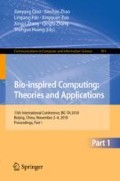Abstract
Logo recognition by Convolutional Neural Networks (CNNs) on a smartphone requires the network to be both accurate and small. In our previous work [1], we proposed the accompanying dataset method for single logo recognition to increase the recall and precision of the target logo recognition. However, the reason why it works was unclear, thus it was hard to compress the network while maintaining the same accuracy. In this paper, we use DeconvNet [9] to visualize our network’s feature maps and propose a metric to analyze them quantitatively. Finally, we obtain a better understanding of the influences in the network brought by accompanying datasets. Under its guidance, an effective way to compress the network is devised by us. The experiments show that we can reduce the size of the neural network’s first layer by 30% while only lower the recall and precision by 0.014 and 0.01. The training time is also saved by 40% due to the network compression.
Access this chapter
Tax calculation will be finalised at checkout
Purchases are for personal use only
References
Wang, Y., Yang, W., Zhang, H.: Deep learning single logo recognition with data enhancement by shape context. In: The 2018 International Joint Conference on Neural Networks (2018)
Krizhevsky, A., Sutskever, I., Hinton, G.E.: ImageNet recognition with deep convolutional neural networks. In: Advances in Neural Information Processing Systems, pp. 1097–1105 (2012)
Hu, J., Shen, L., Sun, G.: Squeeze-and-excitation networks. arXiv preprint arXiv:1709.01507 (2017)
He, K., Zhang, X., Ren, S., Sun, J.: Identity mappings in deep residual networks. In: Leibe, B., Matas, J., Sebe, N., Welling, M. (eds.) ECCV 2016. LNCS, vol. 9908, pp. 630–645. Springer, Cham (2016). https://doi.org/10.1007/978-3-319-46493-0_38
Zhang, X., Li, Z., Loy, C.C., Lin, D.: PolyNet: a pursuit of structural diversity in very deep networks. In: 2017 IEEE Conference on Computer Vision and Pattern Recognition, pp. 3900–3908. IEEE (2017)
Yang, B., Gu, F., Niu, X.: Block mean value based image perceptual hashing. In: International Conference on Intelligent Information Hiding and Multimedia Signal Processing, pp. 167–172. IEEE (2006)
Erhan, D., Bengio, Y., Courville, A., Vincent, P.: Visualizing higher-layer features of a deep network. Univ. Montr. 1341(3), 1 (2009)
Mahendran, A., Vedaldi, A.: Understanding deep image representations by inverting them. In: Proceedings of the IEEE Conference on Computer Vision and Pattern Recognition, pp. 5188–5196. IEEE (2015)
Zeiler, M.D., Fergus, R.: Visualizing and understanding convolutional networks. In: Fleet, D., Pajdla, T., Schiele, B., Tuytelaars, T. (eds.) ECCV 2014. LNCS, vol. 8689, pp. 818–833. Springer, Cham (2014). https://doi.org/10.1007/978-3-319-10590-1_53
Wang, Y., Xu, C., Xu, C., Tao, D.: Packing convolutional neural networks in the frequency domain. IEEE Trans. Pattern Anal. Mach. Intell. (2018). https://doi.org/10.1109/TPAMI.2018.2857824
Luo, J., Wu, J.: An entropy-based pruning method for CNN compression. arXiv preprint arXiv:1706.05791 (2017)
Guo, J., Zhou, B., Zeng, X., Freyberg, Z., Xu, M.: Model compression for faster structural separation of macromolecules captured by Cellular Electron Cryo-Tomography. In: International Conference Image Analysis and Recognition, pp. 144–152. ACM (2018)
Hu, J., He, K., Hopcroft, J.E., Zhang, Y.: Deep compression on convolutional neural network for artistic style transfer. In: Du, D., Li, L., Zhu, E., He, K. (eds.) NCTCS 2017. CCIS, vol. 768, pp. 157–166. Springer, Singapore (2017). https://doi.org/10.1007/978-981-10-6893-5_12
Hu, J., Li, M., Xia, C., Zhang, Y.: Combine traditional compression method with convolutional neural networks. In: Proceedings of the IEEE Conference on Computer Vision and Pattern Recognition Workshops, pp. 2563–2566. IEEE (2018)
Li, M., Hu, J., Xia, C., Zhang, Y.: An implementation of picture compression with a CNN-based Auto-encoder. In: Proceedings of the IEEE Conference on Computer Vision and Pattern Recognition Workshops, pp. 2543–2546. IEEE (2018)
Mitani, T., Fukuoka, H., Hiraga, Y., Nakada, T., Nakashima, Y.: Compression and aggregation for optimizing information transmission in distributed CNN. In: 2017 Fifth International Symposium on Computing and Networking, pp. 112–118. CANDAR (2017)
Xie, X., Han, X., Liao, Q., Shi, G.: Visualization and pruning of SSD with the base network VGG16. In: Proceedings of the 2017 International Conference on Deep Learning Technologies, pp. 90–94. ACM (2017)
Szegedy, C., et al.: Going deeper with convolutions. In: Proceedings of the IEEE Conference on Computer Vision and Pattern Recognition, pp. 1–9. IEEE (2015)
Kalantidis, Y., Pueyo, L., Trevisiol, M., van Zwol, R., Avrithis, Y.: Scalable triangulation-based logo recognition. In: Proceedings of ACM International Conference on Multimedia Retrieval (ICMR 2011), Trento Italy (2011)
Zeiler, M.D., Taylor, G.W., Fergus, R.: Adaptive deconvolutional networks for mid and high level feature learning. In: 2011 IEEE International Conference on Computer Vision (ICCV), pp. 2018–2025. IEEE (2011)
Ahmed, N., Natarajan, T., Rao, K.R.: Discrete cosine transform. IEEE Trans. Comput. 100(1), 90–93 (1974)
Acknowledgments
The work was supported in part by the National High-tech R&D Program of China (863 Program) (2015AA017201) and National Key Research and Development Program of China (2016QY01W0200). The authors are very grateful to the anonymous viewers of this paper.
Author information
Authors and Affiliations
Corresponding author
Editor information
Editors and Affiliations
Rights and permissions
Copyright information
© 2018 Springer Nature Singapore Pte Ltd.
About this paper
Cite this paper
Wang, Y., Zhang, H. (2018). Visualize and Compress Single Logo Recognition Neural Network. In: Qiao, J., et al. Bio-inspired Computing: Theories and Applications. BIC-TA 2018. Communications in Computer and Information Science, vol 951. Springer, Singapore. https://doi.org/10.1007/978-981-13-2826-8_29
Download citation
DOI: https://doi.org/10.1007/978-981-13-2826-8_29
Published:
Publisher Name: Springer, Singapore
Print ISBN: 978-981-13-2825-1
Online ISBN: 978-981-13-2826-8
eBook Packages: Computer ScienceComputer Science (R0)

